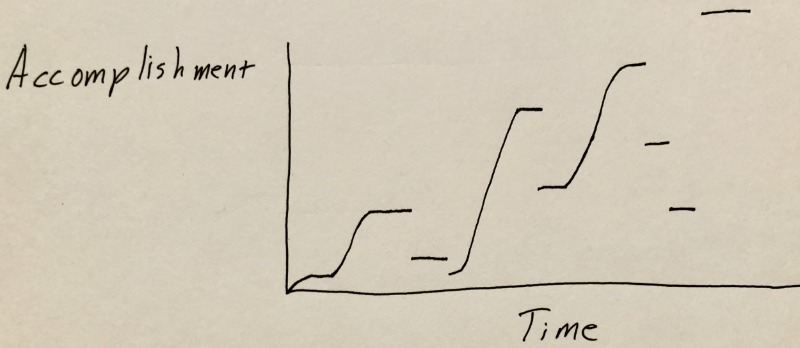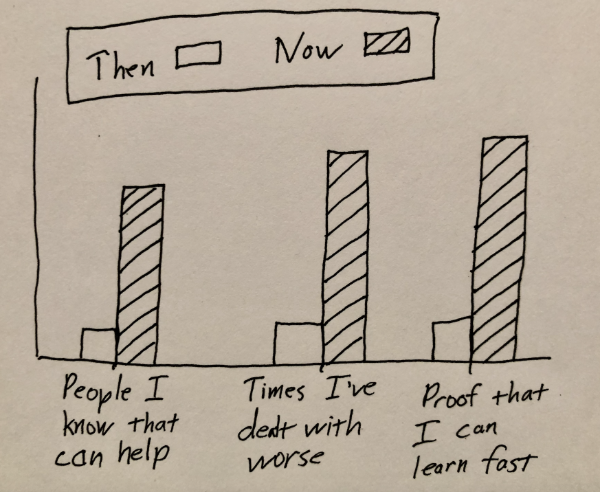Accenture last week published the results of their executive survey, Pulse of Change: 2024 Index. High on the list of concerns for the coming year is talent:
42% (of C-suite leaders) say the skills shortage is one of the top three challenges that would hold back their organizations’ ability to respond to change.
52% say they are not fully prepared to respond to the changes they will face in the 2024 business environment.
The difficulties of talent are tied to both the availability of candidates at all levels, but also their skills and preparedness for the changing roles companies need.
In addition, companies of all sizes rarely excel at hiring in the first place. Short of expensive acquisition of entire teams, executives are hampered by their own team’s skills. Most first-line managers interview and select candidates infrequently, if at all. They are rarely supported by HR processes that do little more than screen for keywords and minimum, often irrelevant, qualifications.
Finding the right people requires both identifying skills, game recognizing game, but also hiring for “fit.”
And this is where organizations fall down.
Fit is often used as an ill-defined and never-repeatable process of assessing “fit for the culture.” This usually gets shortcutted into a “would I like to have a beer with this person” gut feel, leading to hiring biases. Do that enough times, and the team starts to look like a little one dimensional.
Fighting this natural tendency requires a concerted effort, sometimes formal training/coaching, but also thinking like a pro-sports scout.
Pro teams regularly acquire situational players to address specific scenarios. These are players that are not only talented professionals, but are unique in their ability to perform in specific circumstances. Closing pitchers in baseball, long snappers in football, and veteran players placed in roles to mentor younger but less seasoned players.
You need to be able to see and bring in the talent best suited to the situation you’re in.
Charlie O’Donnell has a piece I often refer people to called How to Talk About the Arc of Your Career. In it, O’Donnell advises would-be job seekers to refrain from trying to fit their work history into some false Microsoft Word formatted resume narrative.
Your career will be full of fits and starts, sometimes arching upwards, and sometimes feeling like your best days are behind you. You’ll try to build off each previous step and sometimes you’ll either tear it all down or have it torn down by outside forces—bad luck, a change in the industry, or any number of Murphy’s Law events.
Whatever the direction of your career over time, it doesn’t matter nearly as much as what you can offer right now.
And that chart, and how you present yourself, should look like this—because it is what most reflects reality:
You will bring more to your next role than you’ve ever been able to bring, at any other point in your career. The key is to show how you do that in a way that makes it easy to understand how, the background that went into that preparation, and to be convincing that you can reapply it to new situations.
Finding the “best fit” people for the challenges you face is more than their skill. It’s also the experience of solving problems in similar circumstances you face. Are you in a turnaround? Speed and comfort with ambiguity are premium attributes. Sustaining and building on success? Impatience with the status quo may work against you and cause unneeded friction.
As a leader, your primary job is to create an environment where your team has the opportunity to do their best work every day. Getting the right people on the bus is a foundational step that can accelerate or completely frustrate all your other efforts.
Being able to both see and actively select the right temperament and comfort with your situation can make the difference between winning the competitive race or being mired in mediocrity.
We’re launching a new podcast by and for Community Banking Leaders. It’s called Behind the Vault: Conversations with Customer-Driven Bankers. If you or someone at your institution would like to be highlighted and share your story, apply here -> behindthevaultpod.com/guest

